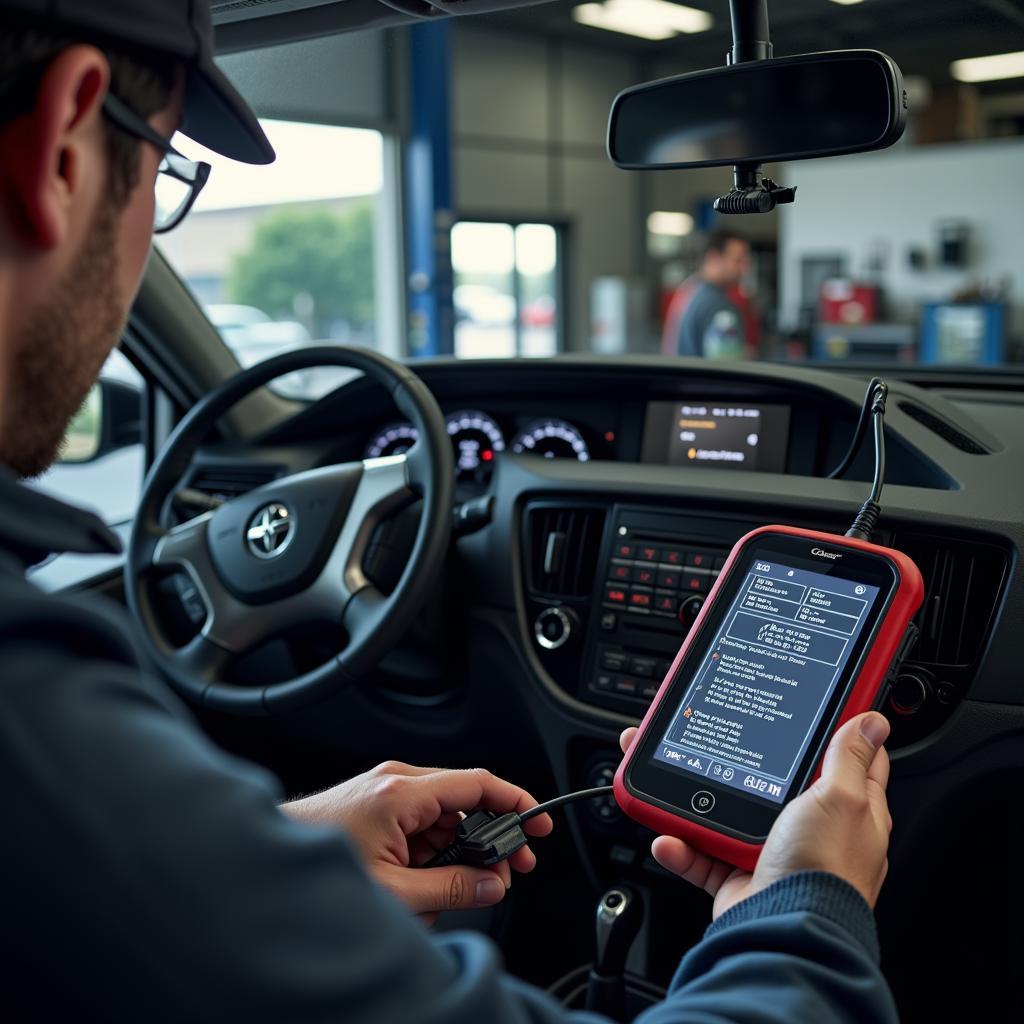My car doesn’t crank. This frustrating scenario has plagued drivers for generations, and with today’s complex vehicle systems, diagnosing the problem can feel overwhelming. However, understanding the potential causes and troubleshooting steps can empower you to identify the issue and potentially save you a costly trip to the mechanic. This guide provides a step-by-step approach to help you pinpoint why your car won’t crank and get you back on the road.
Understanding Why Your Car Won’t Crank
When your car doesn’t crank, it means the engine isn’t turning over when you turn the key or press the start button. Several components can contribute to this issue, ranging from a simple dead battery to more complex electrical or mechanical problems. Before diving into troubleshooting, it’s essential to differentiate between “cranking” and “starting.” Cranking refers to the engine turning over, while starting means the engine actually fires up and runs. This article focuses specifically on addressing cranking issues.
Common Causes for a Car Not Cranking
- Dead Battery: The most frequent culprit. A dead battery won’t have enough power to engage the starter motor.
- Faulty Starter: The starter motor is responsible for physically turning the engine over. If it’s faulty, the engine won’t crank.
- Ignition Switch Problems: The ignition switch sends power to the starter. A malfunctioning switch can interrupt this process.
- Wiring Issues: Corroded or loose wiring connections can prevent the necessary power from reaching the starter.
- Neutral Safety Switch Malfunction: This safety feature prevents the car from starting unless it’s in park or neutral. A faulty switch can mimic a cranking issue.
- Blown Fuses or Relays: Fuses and relays protect the starting system’s electrical components. A blown fuse or a faulty relay can disrupt the power flow.
Troubleshooting Steps When Your Car Doesn’t Crank
- Check the Battery: First, check the battery terminals for corrosion or loose connections. Clean them with a wire brush if necessary. If the connections are secure, try jump-starting the car. If the car starts with a jump, you likely need a new battery.
- Test the Starter: If the battery isn’t the issue, the starter could be at fault. You can test the starter by tapping it lightly with a hammer while someone turns the key. Sometimes, a stuck starter can be temporarily jolted into action. If the car cranks, the starter likely needs replacement. However, this is a temporary fix, and you should have it professionally diagnosed.
- Inspect the Ignition Switch: Try wiggling the key in the ignition while trying to start the car. If the car cranks intermittently, the ignition switch could be faulty.
- Examine Wiring and Connections: Visually inspect the wiring connected to the starter and battery for any signs of damage, corrosion, or loose connections.
- Check Fuses and Relays: Locate the fuse box and identify the fuses and relays associated with the starting system. Replace any blown fuses or faulty relays.
Remote Diagnostics and Software Solutions
In some modern vehicles, remote diagnostics and software installations can address certain cranking problems. These advanced techniques can sometimes identify and fix software glitches or module communication errors that prevent the car from cranking. Contacting a specialist in remote automotive diagnostics can be a viable option if basic troubleshooting doesn’t resolve the issue.
“Remote diagnostics are revolutionizing the automotive repair industry. We can often identify and fix complex issues without the car ever entering a shop,” says John Smith, Lead Automotive Diagnostic Technician at Remote Auto Solutions.
What if My Car Still Doesn’t Crank?
If you’ve tried these steps and your car still doesn’t crank, it’s best to seek professional help. A qualified mechanic can accurately diagnose the problem using specialized diagnostic equipment.
 Mechanic Diagnosing Car Problem with Diagnostic Tool
Mechanic Diagnosing Car Problem with Diagnostic Tool
Conclusion
A car that doesn’t crank can be a significant inconvenience. By understanding the potential causes and following the troubleshooting steps outlined in this guide, you can often identify the issue and take appropriate action. Whether it’s a simple battery replacement or a more complex repair, addressing the problem promptly will get you back on the road and minimize further complications. Remember, if you’re unsure about any step, consulting a qualified mechanic is always recommended.
FAQ
- Can a bad alternator cause a car not to crank? While a bad alternator can eventually drain your battery, it usually won’t prevent the car from cranking initially.
- How long can a car battery sit before it dies? This depends on the battery’s age and condition, but typically a battery can sit for a few weeks to a couple of months before completely discharging.
- Will a car crank with a bad starter? No, a faulty starter usually prevents the engine from cranking at all.
- How much does it cost to replace a starter? The cost varies depending on the car make and model but typically ranges from $200 to $500.
- Can I drive my car with a bad ignition switch? Driving with a faulty ignition switch can be dangerous and may lead to the car stalling or not starting at all. It’s essential to have it repaired as soon as possible.
- What is the difference between a car not cranking and not starting? Cranking refers to the engine turning over, while starting is when the engine fires up and runs. A car that doesn’t crank won’t make any noise when you turn the key, whereas a car that doesn’t start may crank but not run.
- Can extreme temperatures affect car starting? Yes, both extreme heat and cold can affect battery performance and make it harder for a car to crank.
“Regular car maintenance, including battery and starter checks, can prevent many cranking issues,” advises Maria Garcia, Certified Automotive Technician.

